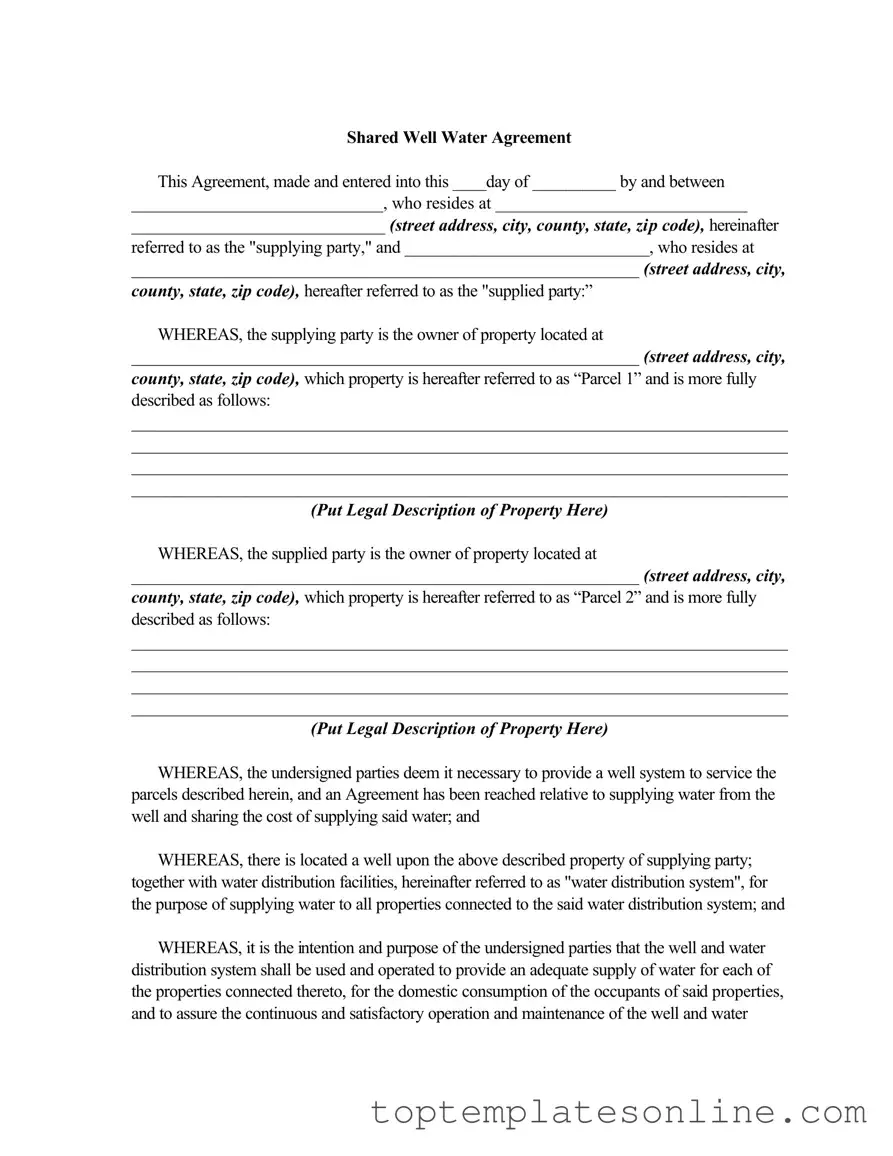The Shared Well Agreement form is an essential document designed to facilitate the equitable use of a shared water source between two property owners. This agreement outlines the rights and responsibilities of both the supplying party, who owns the well, and the supplied party, who benefits from its use. It details the specific properties involved, referred to as Parcel 1 and Parcel 2, and emphasizes the necessity of a well system to ensure adequate water supply for domestic purposes. The agreement stipulates the financial obligations of the supplied party, including an annual fee and shared costs for maintenance and operation of the water distribution system. Moreover, it addresses the responsibilities of both parties regarding repairs and emergency access, ensuring that both owners can act swiftly in case of water delivery failures. The document also emphasizes the importance of maintaining water quality, as well as the procedures for terminating participation in the agreement should the well become contaminated or if an alternative water source is established. By clearly defining the terms of use, cost-sharing, and maintenance responsibilities, the Shared Well Agreement aims to foster cooperation and prevent disputes between neighbors, ultimately benefiting all parties involved.
